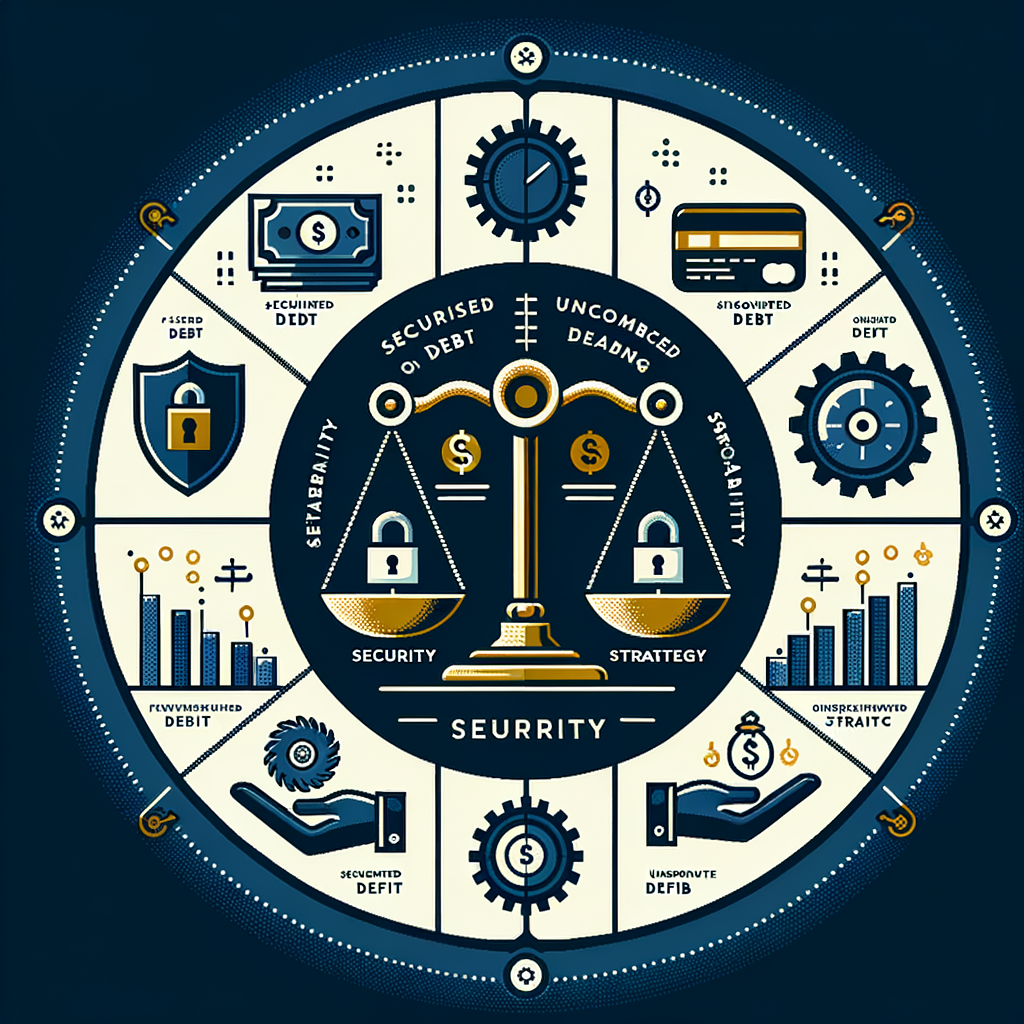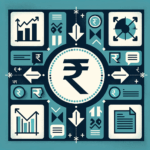Secured vs. Unsecured Debt: What’s the Best Management Strategy?
Are you planning to buy your dream car with a loan while simultaneously juggling credit card bills from last month’s family vacation? This is a common financial scenario for many Indians. While debt is a powerful tool for achieving personal milestones and fuelling business growth, managing it can feel overwhelming. The first, most crucial step towards gaining financial control is to understand the fundamental difference between secured vs unsecured debt. Failing to grasp this distinction can lead to poor financial decisions and unnecessary stress. This comprehensive guide will provide a clear secured vs unsecured debt comparison, outline actionable management strategies for each type, and equip you with the knowledge needed for effective debt management in India.
Understanding Secured vs Unsecured Debt: The Core Difference
Before you can devise a winning strategy to manage your liabilities, you must know what you are dealing with. Debt in India primarily falls into two categories: secured and unsecured. Each has its own set of rules, risks, and rewards. Understanding this core difference is the foundation of sound financial planning and will dictate the best approach to repayment. Let’s break down each type to build that essential foundation.
What is Secured Debt? The Asset-Backed Loan
Secured debt is a loan that is backed by a tangible asset you own, which is pledged as collateral. This collateral acts as a security blanket for the lender. If, for any reason, the borrower fails to repay the loan as per the agreed terms, the lender has the legal right to seize and sell the collateral to recover the outstanding amount. This significantly reduces the lender’s risk, which is why they are often willing to offer more favourable terms for these types of loans.
Common examples of secured debt in India that you might be familiar with include:
- Home Loan: Your house or property is the collateral.
- Loan Against Property (LAP): You leverage an existing property you own to get a loan.
- Car Loan: The vehicle itself serves as the collateral.
- Gold Loan: Your gold ornaments or coins are pledged with the lender.
Pros & Cons of Secured Debt:
Pros: Secured loans typically come with lower interest rates, higher borrowing limits, and longer repayment tenures compared to their unsecured counterparts. This makes them ideal for large, planned expenses.
Cons: The primary drawback is the risk of losing your asset if you default. The approval process is also generally longer and more rigorous due to the need for asset valuation and legal verification.
What is Unsecured Debt? The Trust-Based Loan
Unsecured debt, as the name suggests, is not backed by any collateral. When a lender gives you an unsecured loan, they are doing so based purely on your creditworthiness—your financial reputation and perceived ability to repay. This is why your CIBIL score plays a paramount role. A high CIBIL score (typically 750 and above) signals to lenders that you are a responsible borrower, making you eligible for these loans and often securing you a better interest rate. A low score can lead to outright rejection or an offer with a very high interest rate.
Common examples of unsecured debt in India include:
- Personal Loan: Can be used for any purpose, from a wedding to a medical emergency.
- Credit Card Debt: The outstanding balance on your credit card.
- Consumer Durable Loans: Loans taken to purchase electronics or home appliances.
- Small Business Loans: Some government schemes like MUDRA loans (under a certain limit) or other fintech loans for working capital fall into this category.
Pros & Cons of Unsecured Debt:
Pros: The biggest advantages are faster disbursal (sometimes within hours) and the fact that no asset is at risk. The documentation is also relatively simpler.
Cons: To compensate for the higher risk they are taking, lenders charge significantly higher interest rates. The loan amounts are generally smaller, and the eligibility criteria can be quite strict.
Quick Comparison Table: Secured vs Unsecured Debt
For a quick overview, here’s a simple table that highlights the key differences:
| Feature | Secured Debt | Unsecured Debt |
|---|---|---|
| Collateral Required | Yes (Property, Car, Gold etc.) | No |
| Interest Rate | Lower | Higher |
| Loan Amount | Higher | Lower |
| Risk to Borrower | High (Risk of losing asset) | Low (No asset at risk, but legal action possible) |
| Impact on CIBIL Score | Significant | Significant |
| Approval Time | Slower | Faster |
Top Strategies for Managing Secured Debt in India
Managing large, long-term loans like a home or car loan requires discipline and foresight. Given that your most valuable assets are on the line, employing the right secured debt management strategies India is not just advisable; it’s essential for your financial security. Here are some of the most effective approaches.
Strategy 1: Smart Prepayment to Reduce Interest Burden
One of the most powerful strategies for managing secured debt is prepayment. When you make a prepayment, you are paying a portion of the principal amount ahead of schedule. This reduces your outstanding principal, and as a result, the total interest you pay over the loan’s tenure decreases dramatically. Even small, regular prepayments can save you lakhs of rupees in interest on a long-term home loan. It’s important to note that as per Reserve Bank of India (RBI) guidelines, lenders cannot charge a prepayment penalty on floating-rate home loans, making this strategy even more attractive for homeowners.
Actionable Tip: Commit to using any financial windfalls—such as an annual bonus, a business profit, or an inheritance—to make a partial prepayment. A simple goal could be to pay one extra EMI every year. This single step can shorten your loan tenure by several years.
Strategy 2: Balance Transfer and Refinancing
The interest rate environment in India is dynamic. The rate you secured a few years ago might not be the most competitive one available today. A balance transfer, or refinancing, involves moving your outstanding loan from your current lender to a new one who is offering a lower interest rate. This can lead to a lower EMI, freeing up monthly cash flow, or help you pay off the loan faster if you continue with the same EMI amount. This is a very effective financial tool for reducing your interest outgo over the long run.
Actionable Tip: Proactively monitor the market for interest rate trends. If you find a lender offering a rate that is at least 0.5% lower than your current rate, it’s worth exploring a balance transfer. Always factor in the processing fees and other charges of the new loan to ensure the switch is financially beneficial.
Strategy 3: Never Miss an EMI
This is the golden rule of secured debt. The consequences of defaulting on an EMI for a secured loan are severe and multi-faceted. Firstly, it immediately impacts your CIBIL score negatively, making it difficult and expensive to get any form of credit in the future. Secondly, lenders will levy hefty late payment penalties. Most critically, consistent defaults can lead the lender to invoke the SARFAESI Act, 2002, giving them the power to repossess and auction your asset to recover their money. Losing your home or car is a devastating financial and emotional blow.
Actionable Tip: The simplest way to ensure you never miss a payment is to automate it. Set up an Electronic Clearing Service (ECS) mandate or a standing instruction with your bank to automatically debit the EMI amount from your account on the due date.
Proven Strategies for Managing Unsecured Debt in India
Unsecured debt, especially high-interest debt like that from credit cards, can spiral out of control if not managed aggressively. Its convenience is its biggest trap. The key to effective unsecured debt management strategies India is to be proactive and methodical. Your goal should be to eliminate this form of debt as quickly as possible to stop the interest from accumulating.
Strategy 1: The Debt Avalanche vs. Debt Snowball Method
When you have multiple unsecured loans, deciding which one to tackle first can be confusing. Two of the most popular and proven strategies for managing unsecured debt are the Avalanche and Snowball methods. Choosing between the Debt Snowball vs. Debt Avalanche: Which Strategy Is Best for You? often comes down to your personal financial style.
- Debt Avalanche: With this method, you focus on paying off the debt with the highest interest rate first, while making minimum payments on all others. For instance, you would aggressively pay down a credit card bill charging 40% per annum before a personal loan at 15%. Mathematically, this approach saves you the most money in interest over time.
- Debt Snowball: This method focuses on psychology. You pay off the smallest debt first, regardless of its interest rate, to score a quick win. This provides a powerful motivational boost to keep you going. Once the smallest debt is cleared, you roll the amount you were paying on it into the payment for the next smallest debt.
Actionable Tip: List all your unsecured debts, their outstanding amounts, and their interest rates. If you are disciplined and motivated by numbers, the Debt Avalanche is superior. If you need early victories to stay on track, the Debt Snowball might be the better choice for you.
Strategy 2: Consolidate High-Interest Debts
If you are juggling multiple credit card bills and small personal loans, each with its own due date and high interest rate, debt consolidation can be a lifesaver. This strategy involves taking out a single, new loan—typically a personal loan at a much lower interest rate—and using the funds to pay off all your other high-interest unsecured debts at once. This streamlines your finances significantly. The benefits include having only one EMI to track, a fixed repayment tenure, and most importantly, a lower overall interest burden.
Actionable Tip: Before opting for consolidation, calculate the weighted average interest rate you are currently paying across all your unsecured debts. Then, compare this with the interest rates offered on personal loans. Only proceed if the new loan offers a significantly lower rate that justifies the processing fees.
Strategy 3: Improve Your CIBIL Score Proactively
Your CIBIL score is your financial passport in the world of unsecured lending. A score above 750 not only improves your chances of loan approval but also gives you the power to negotiate for better terms and lower interest rates. A good score is a direct reflection of your credit discipline. Therefore, proactively working to improve it is a cornerstone of long-term debt management. It opens doors to better financial products that can help you manage your finances more effectively in the future.
Actionable Tip: You are entitled to one free full credit report every year from each of the authorized credit bureaus in India. Visit the official CIBIL website (https://www.cibil.com/) to get your report. Review it carefully for any errors and ensure all your payments are being reported accurately.
Best Debt Management Practices India: A Unified Approach
Whether you have secured or unsecured debt, or a mix of both, certain foundational principles apply. Adopting these best debt management practices India will not only help you clear your existing liabilities but also build a resilient financial future, preventing you from falling into a debt trap again. These are the pillars of sustainable financial health.
Create a Disciplined Budget
You cannot manage what you do not measure. A budget is the most fundamental tool for taking control of your money. It gives you a clear picture of where your money is coming from and where it is going. A popular and simple framework to start with is the 50/30/20 rule: allocate 50% of your income to Needs (rent, EMIs, groceries), 30% to Wants (entertainment, dining out), and 20% to Savings and Debt Repayment. By tracking your spending, you can identify areas where you can cut back and redirect that money towards paying off your debts faster.
Actionable Tip: Use a modern budgeting app or a simple spreadsheet to diligently track every rupee. At the end of the month, review your spending and challenge every expense. This discipline is a core component of effective financial strategies for debt management.
Build an Emergency Fund
Life is unpredictable. Building an Emergency Fund While Managing Debt can feel like a challenge, but it is an essential safety net. An unexpected medical bill, a sudden job loss, or an urgent home repair can throw your finances into disarray. Without a safety net, the only option is often to take on more high-interest debt, deepening the cycle. An emergency fund—a corpus of money equivalent to 3-6 months of your essential living expenses—acts as a crucial buffer. It provides you with the financial resources to handle emergencies without derailing your debt repayment goals.
Actionable Tip: Start small. You don’t need to build the entire fund overnight. Set an initial goal of saving ₹5,000 or ₹10,000. Keep this money in a separate, high-yield savings account or a liquid mutual fund where it is easily accessible but not mixed with your daily spending money.
Conclusion
Understanding the critical distinction between secured vs unsecured debt is the first step towards financial mastery. Secured debt, while cheaper, puts your assets at risk, demanding unwavering payment discipline. Unsecured debt, while convenient, can become a costly burden due to its high interest rates. The right management strategy is not one-size-fits-all; it depends entirely on the nature of your liabilities.
Remember these key takeaways on your path to becoming debt-free:
1. Prioritize ruthlessly: Always focus on clearing high-interest unsecured debt first to stop the financial drain.
2. Protect your assets: Never, ever default on secured debt. The consequences are far too severe.
3. Build a strong foundation: A disciplined budget and a well-funded emergency fund are your best defences against future debt.
Navigating the complexities of debt can be challenging. For personalized financial strategies for debt management tailored to your unique situation, contact the experts at TaxRobo today. Let us help you build a clear path to financial freedom.
Frequently Asked Questions (FAQs)
1. What happens if I default on a secured loan in India?
If you default on a secured loan, the lender can initiate proceedings under the SARFAESI Act, 2002. This allows them to repossess your collateral (like your house or car) and auction it to recover their dues without court intervention. This action also severely damages your credit history for years, making future borrowing from any legitimate source extremely difficult and expensive.
2. Is it better to prepay a secured loan (like a home loan) or invest the money?
This is a classic “rate of return” dilemma. The answer depends on the loan’s interest rate versus the potential post-tax returns from your investment, and your personal risk appetite. If your home loan interest rate is, say, 8.5%, prepaying it gives you a guaranteed, risk-free “return” of 8.5%. If you are a savvy investor confident of earning a post-tax return significantly higher than 8.5% (e.g., 12-15% from equity markets over the long term), then investing might be a better option. For risk-averse individuals, prepayment is often the wiser choice.
3. Which is better for a small business in India: secured or unsecured loans?
It depends entirely on the business’s need and stage. For new ventures, securing a Bank Loan for Startup Business can be the first major financial step. Secured loans are ideal for long-term, high-value capital expenditure like purchasing machinery, commercial property, or a large inventory, as they offer lower interest rates and longer tenures. Unsecured business loans are better suited for short-term needs like managing working capital, bridging a temporary cash flow gap, or seizing a quick business opportunity, especially when you don’t want to pledge assets or need funds quickly.
4. Can I use a personal loan (unsecured) to make a down payment for a home loan (secured)?
While it is technically possible to get a personal loan for this purpose, it is highly discouraged by lenders and is a very risky financial strategy. Taking on two loans simultaneously significantly increases your EMI burden and your fixed obligations-to-income ratio (FOIR), making you a high-risk borrower in the eyes of the home loan provider. This can even lead to the rejection of your home loan application.
5. What are the top three debt management tips for Indians just starting their careers?
For young professionals, establishing good financial habits early is crucial. The top three tips are:
1. Use Credit Cards as a Tool, Not Extra Income: Use credit cards for convenience and rewards, but always pay the full outstanding balance by the due date. Avoid the “minimum payment” trap at all costs.
2. Build an Emergency Fund First: Before taking on any major EMI commitments like a car or personal loan, build an emergency fund of at least three months’ worth of expenses.
3. Read the Fine Print: Always read the loan agreement carefully before signing. Understand all the terms, conditions, interest rate calculations, and hidden charges like processing fees, prepayment penalties, etc.
These are some of the most crucial debt management tips for Indians to build a strong financial future.



